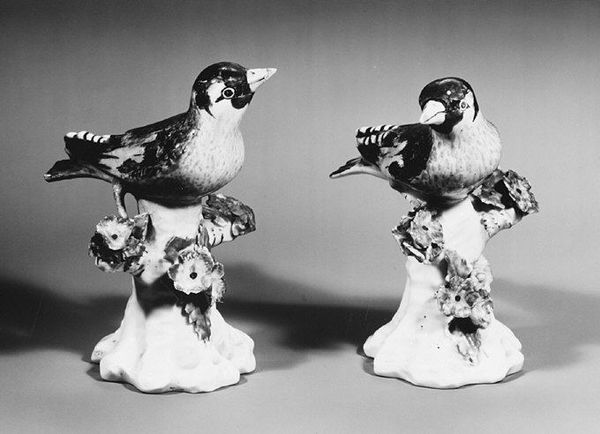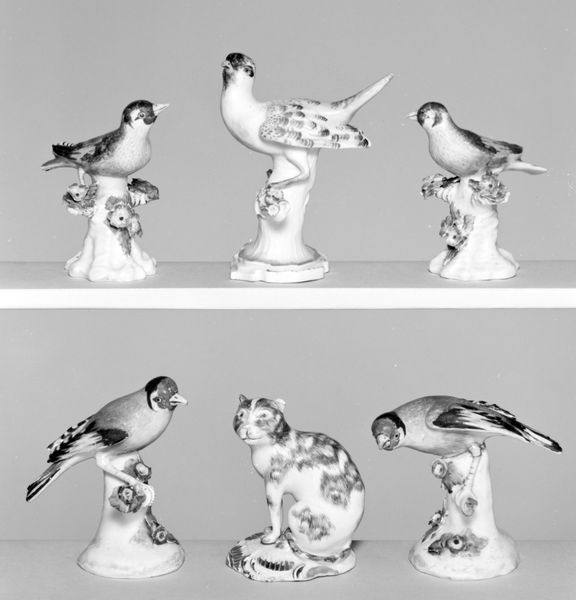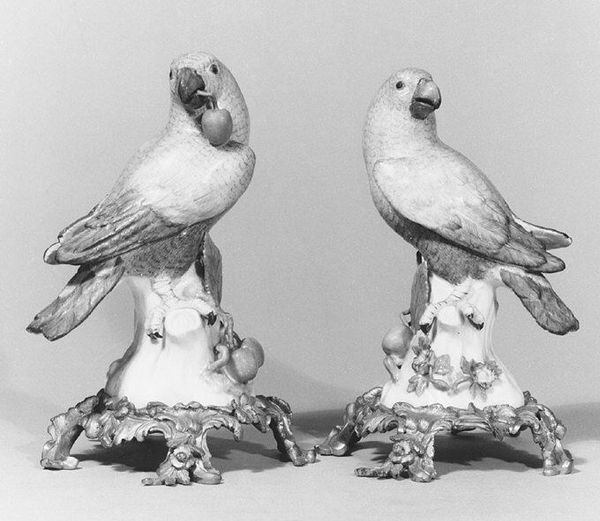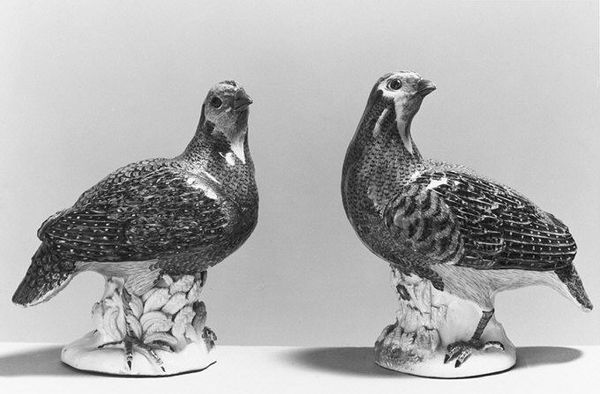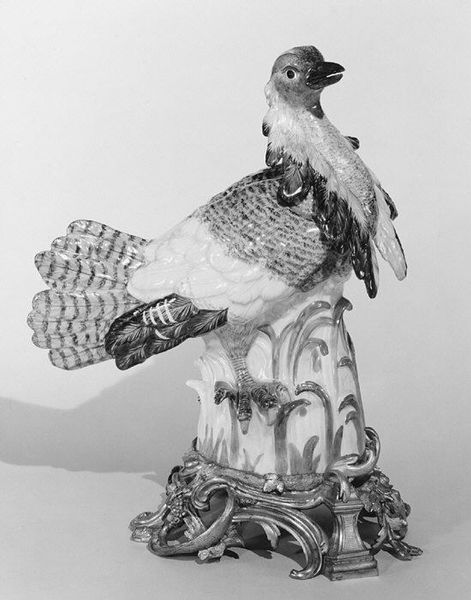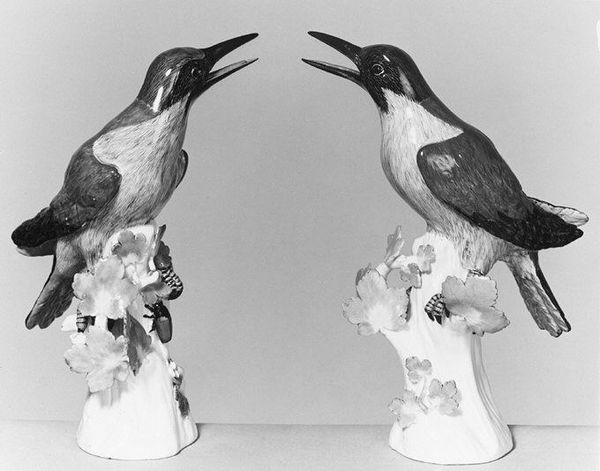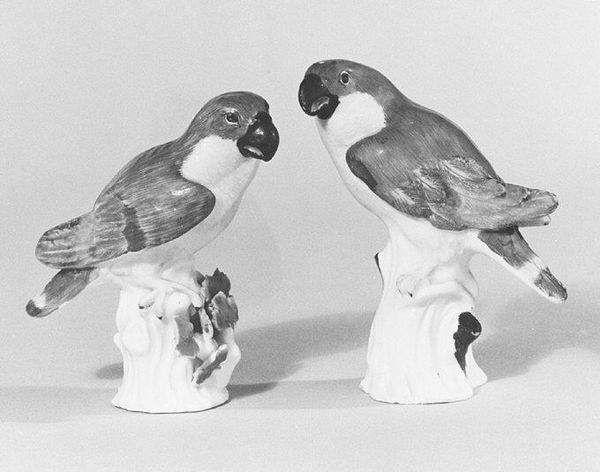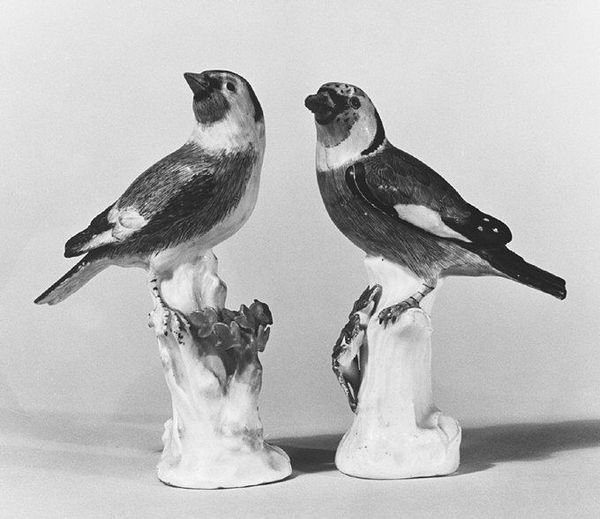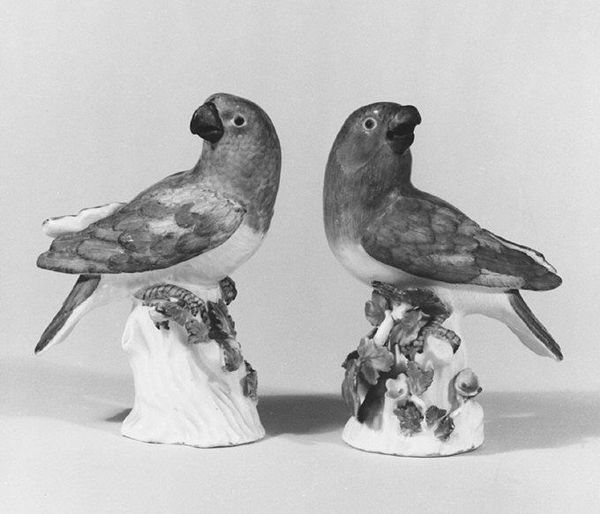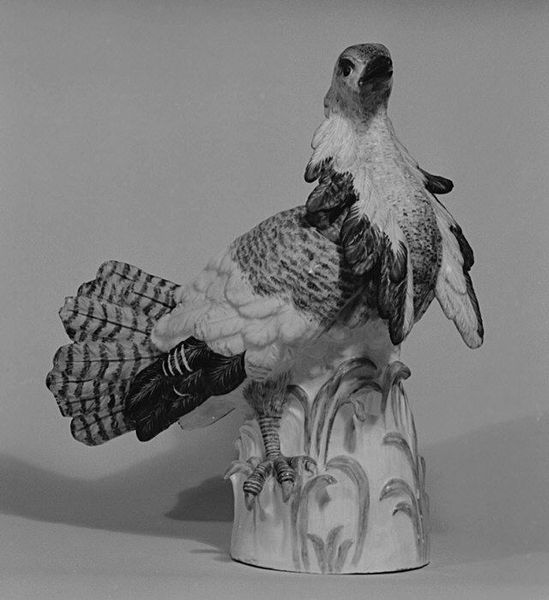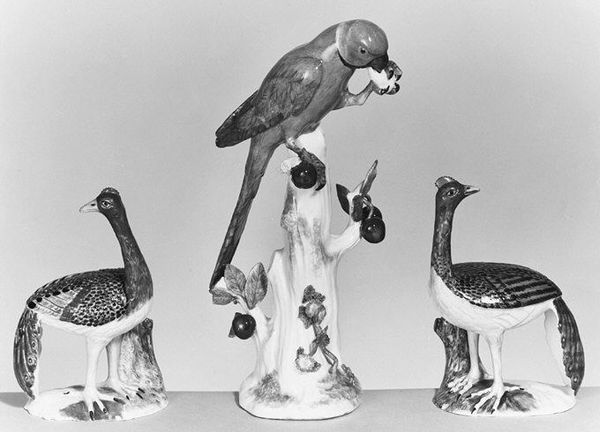
ceramic, porcelain, sculpture
#
sculpture
#
ceramic
#
bird
#
porcelain
#
sculpture
#
decorative-art
#
rococo
Dimensions: H. 6 3/4 in. (17.1 cm.)
Copyright: Public Domain
Curator: Here we have "Wagtail," one of a pair of rococo porcelain sculptures created by the Meissen Manufactory in 1733. The birds, perched jauntily, reside in the collection of the Metropolitan Museum of Art. Editor: My first impression is one of delicacy. It feels light, almost ephemeral. The smooth, pale porcelain and the precise modeling give the wagtail an elegant, refined air. It speaks of craftsmanship, of labor channeled into capturing something so seemingly simple. Curator: These birds encapsulate 18th-century symbolism—a sort of miniaturized pastoral idyll. Birds frequently signified freedom, joy, even the soul's flight toward heaven. The wagtail itself, with its distinctive tail movement, can also imply movement or even a light-hearted flitting between thoughts or locations. Editor: Absolutely. And that inherent contrast interests me: such immense industrial and social effort to fix and refine what is essentially 'the flitting’ made permanent through mining, labor and elaborate molding. It also implies the growing global trade in materials, with Meissen’s ambitions explicitly to copy East Asian porcelain recipes, itself made possible by exploiting materials and people across continents. Curator: Yes, Meissen was intensely competitive, spurred by Augustus the Strong's desire to replicate Asian porcelain’s whiteness and translucence. The bird, though naturalistic, has this air of aristocratic display – a controlled, porcelain representation of nature, created in contrast with their sourcing and the reality for many working people outside those gilded rooms. Editor: These tiny sculptures remind us how ‘nature’ has historically been co-opted as status symbol. Think about how this era and object represent consumption patterns. To create these objects involved industrial processes to manufacture such frivolous things! It reflects so clearly both human artistry and, indeed, a problematic system of social inequality. Curator: In many ways, porcelain birds like these embodied a desire to capture a piece of the untamed world within the confines of domestic life, imbuing those spaces with narratives of exploration and natural philosophy—very much how one’s own garden could stand in for a personal vision of paradise. Editor: Seeing "Wagtail" truly foregrounds the deep connection between material, making and symbolic meaning, particularly as it reflected then, and now, patterns of access to that world. It invites an ongoing dialogue on not just aesthetics but also value and exploitation, as it remains on display today.
Comments
No comments
Be the first to comment and join the conversation on the ultimate creative platform.
